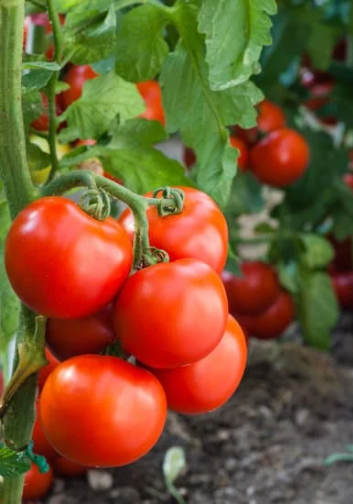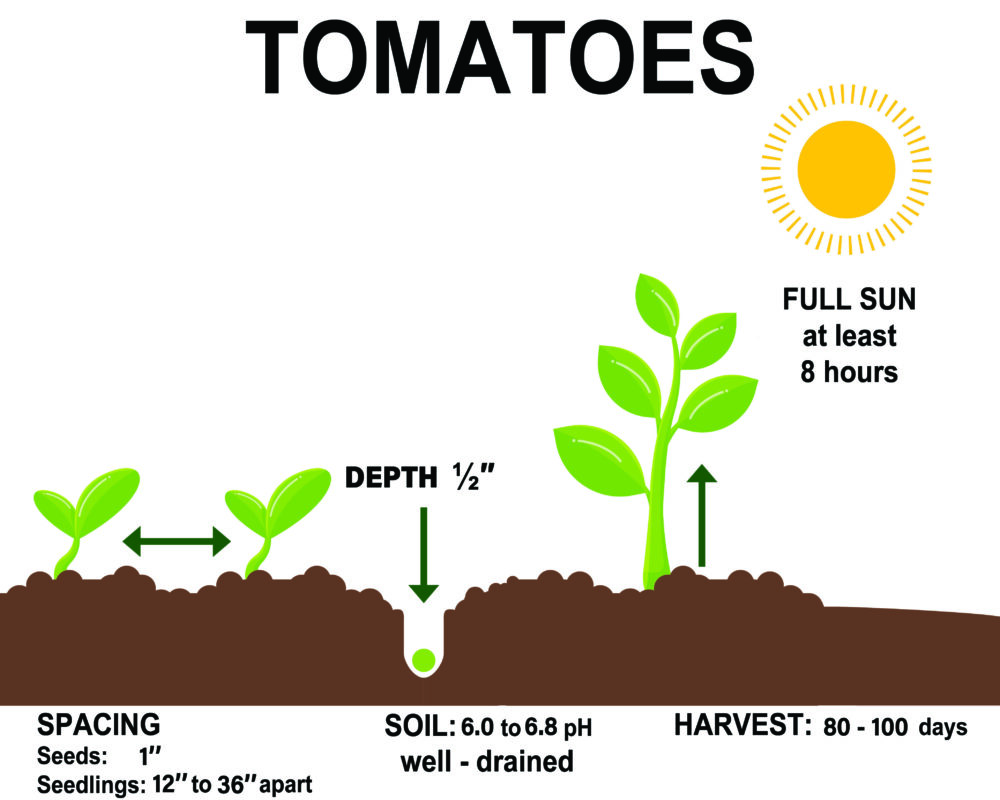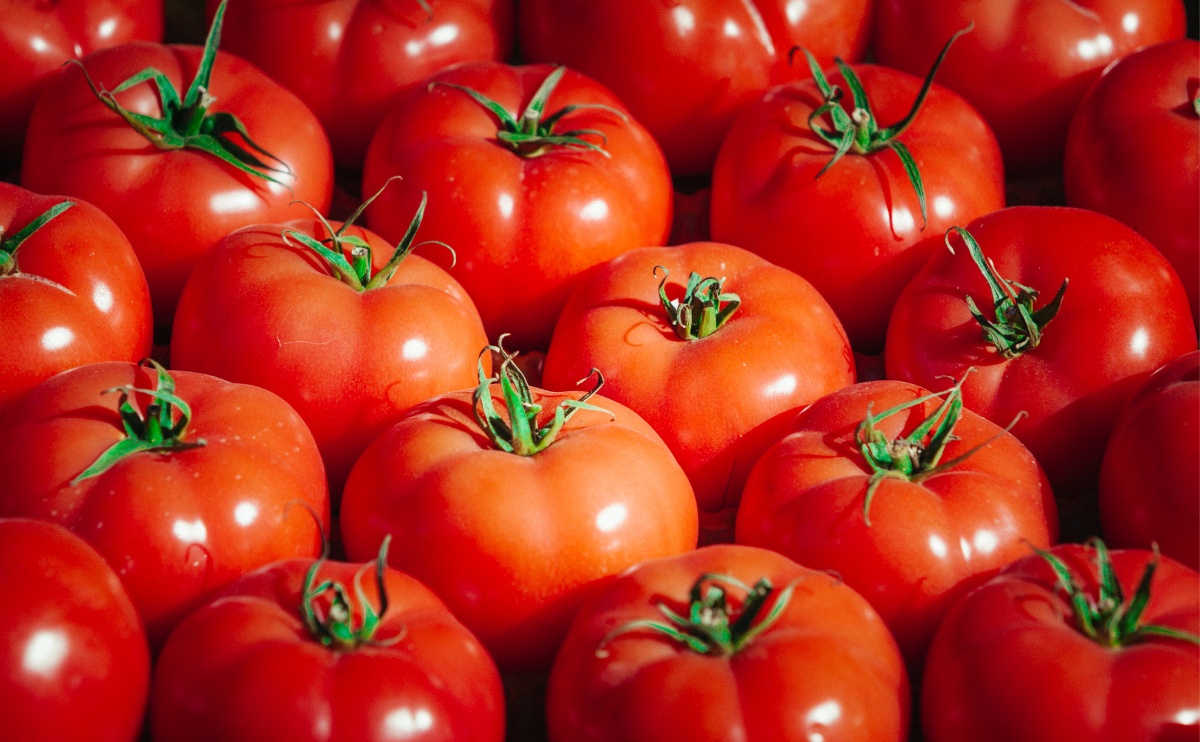The tomato is the edible berry of the plant Solanum lycopersicum,commonly known as the tomato plant. The species originated in western South America, Mexico, and Central America. The Mexican Nahuatl word tomatl gave rise to the Spanish word tomate, from which the English word tomato derived. Its domestication and use as a cultivated food may have originated with the indigenous peoples of Mexico. The Aztecs used tomatoes in their cooking at the time of the Spanish conquest of the Aztec Empire, and after the Spanish encountered the tomato for the first time after their contact with the Aztecs, they brought the plant to Europe, in a widespread transfer of plants known as the Columbian exchange. From there, the tomato was introduced to other parts of the European-colonized world during the 16th century.
Tomatoes are a significant source of umami flavor. They are consumed in diverse ways: raw or cooked, and in many dishes, sauces, salads, and drinks. While tomatoes are fruits—botanically classified as berries—they are commonly used culinarily as a vegetable ingredient or side dish.
Numerous varieties of the tomato plant are widely grown in temperate climates across the world, with greenhouses allowing for the production of tomatoes throughout all seasons of the year. Tomato plants typically grow to 1–3 meters (3–10 ft) in height. They are vines that have a weak stem that sprawls and typically needs support. Indeterminate tomato plants are perennials in their native habitat, but are cultivated as annuals. (Determinate, or bush, plants are annuals that stop growing at a certain height and produce a crop all at once.) The size of the tomato varies according to the cultivar, with a range of 1–10 cm (1⁄2–4 in) in width.

| Botanical Name | Solanum lycopersicum |
| Common Name | Tomato |
| Plant Type | Annual vegetable |
| Size | 3–6 ft. tall, 2–3 ft. wide |
| Sun Exposure | Full sun |
| Soil Type | Loamy, well-drained soil |
| Soil pH | 6.0–6.8 (slightly acidic) |
| Hardiness Zones | 3–11 (USDA) |
| Native Area | South America, Central America |

When to Plant?
This will be determined by your planting zone. There is a final frost date for each area. As a result, you can plan your gardening activities around this date. Check our Frost Dates Across North America: First & Last Frost Dates Chart. However, the date will not be the same for every plant.
How to Plant
March is an ideal time for planting tomatoes indoors. It’s best to start growing them indoors six weeks before planting them outside, or in other words, one or two weeks after the last frost date.
Sow seeds in plains and grow until they are at least 8 inches tall and outside soil temperature is 60°F.
The tomato must be seasoned before planting outdoors, usually in May.
Choose a sunny, well-drained bed to plant your tomatoes on.
Before planting, add compost or other organic additives to the soil and apply starter fertilizer to help small plants grow well. Provide a distance of at least 5 feet for good air circulation.

Sow them ½″ deep in warm soil at room temperature.
The ideal soil temperature is between 60°F and 90°F. Warm soil ensures faster germination.
Remove the weeds from the bed and mulch between the rows to prevent weed seeds’ germination and conserve moisture.
These tomatoes grow quickly and easily and sometimes produce massive fruits, up to 2 pounds!
Companions: Asparagus, onions, carrots, green onions, and garlic. It is not advisable to plant tomatoes next to cabbage or Brussels sprouts. Also, avoid planting tomatoes next to fennel, corn, and potatoes. This neighborhood can slow or stop tomato plants from growing.
How to Cultivate
Many farmers turn the soil over and use mulch, such as winter cover crops or straw.
As is the case with most tomatoes, pinching the first shoots will help them grow.
They should be tied to a lattice, placed on a pole, or in a cage. Rot and other disorders are common when steaks are not kept upright.
Tomatoes require at least 8 hours of sunlight a day.
Water – Water whenever the soil becomes dry down to about 1 – 2 inches below the soil surface. It might mean watering once a week in mild weather or watering up to three times a week in hot, dry weather.
Soil – 6.0 to 6.8. pH, well-drained
Spacing – seeds 1″
Seedlings 12″ to 36″ apart
Seed life: 4 years
Sun: Full sun at least 8 hours
Planting: 1/8″ deep in flats
Germination – 6 to 12 days, 60°F to 95°F
Day to Harvest: 80 – 100 days
How to Harvest
Tomatoes will begin to ripen from the bottom.
The bottom ripens earlier than the top, so keep an eye on the tomatoes’ bottom to see when it’s time to harvest.
Choose tomatoes when the skin looks waxy and smooth, even if the top is not yet mature.
To pick tomatoes, pluck the fruits from the plant with light rotational movements.
Hydroponics
Germination: To germinate tomato seeds hydroponically, select seeds suitable for hydroponic growing and sow them in a small container filled with a growing medium such as rockwool cubes, coco coir or perlite. Keep the container in a warm, dark place until the seeds germinate and move them to an area with bright light once the seedlings emerge.
pH range: The ideal pH range for hydroponic tomato growing is 5.5 to 6.5. You can use a pH meter to test the pH level of your hydroponic solution. If it’s too high or too low, adjust it with pH up or pH down solutions.
EC: EC stands for electrical conductivity, which measures the level of dissolved salts in the hydroponic solution. For growing tomatoes hydroponically, an EC of 2.0 to 3.0 is ideal.
PPM: PPM is another way to measure the concentration of nutrients in the hydroponic solution. For hydroponic tomatoes, the PPM should be around 1400 to 2100.
Humidity: The humidity level in your hydroponic growing area should be around 60-70% during the day and 80-90% at night. You can use a hygrometer to measure the humidity and a dehumidifier or humidifier to adjust it as necessary.
Light hours: Tomatoes need around 14-16 hours of light per day to grow properly. You can use LED grow lights or natural sunlight to provide the necessary light.
Temperature air: The ideal air temperature for hydroponic tomato growing is around 21-26°C during the day and 18-21°C at night. Proper ventilation and air circulation are also important for plant health.
Temperature water: The water temperature for hydroponic tomato growing should be around 18-22°C. You can use a water heater or chiller to adjust the water temperature as necessary.
With these guidelines, you should be able to grow healthy plants hydroponically. Good luck, and happy growing!



